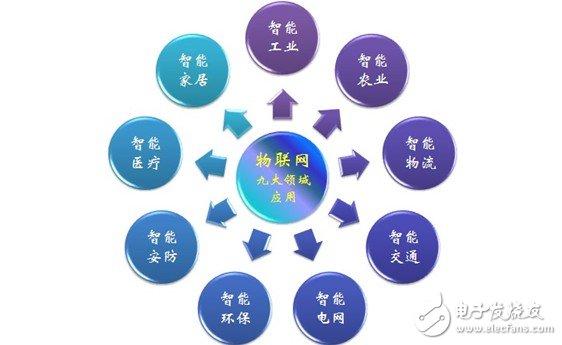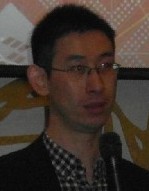The Java language is an object-oriented programming language that can write cross-platform applications. It is a general term for the Java programming language and the Java platform (JavaSE, JavaEE, JavaME), which was introduced by Sun Microsystems in May 1995. Java technology delivers exceptional versatility, efficiency, platform portability and security for PCs, data centers, game consoles, scientific supercomputers, mobile phones and the Internet, as well as the world's largest developer community . In the global cloud computing and Internet of Things industry environment, Java has significant advantages and broad prospects.
Cloud computing and JAVA language
According to IDC's latest research data, China's cloud computing infrastructure market investment growth rate has reached 42.0%, while IDC predicts that China's cloud computing service market will reach 1.83 billion US dollars in 2013, China's cloud computing infrastructure market will exceed the size in 2016. One billion dollars. Under the dual support of national policies that encourage the development of cloud computing, central and local governments, the era of cloud computing has arrived, and China will usher in the golden decade of cloud computing development.
Cloud computing is the product of the integration of computing such as distributed computing, parallel computing, utility computing, network storage, virtualization, load balancing, and network technology. In the various technical fields involved in cloud computing, Java has maintained its leading position for many years with its characteristics of good security, openness, stability, and cross-platform. The underlying development language used in many strategic projects involving cloud computing and planning cloud computing development is the Java language.

The simplicity, high performance, security and other features that JAVA language presents as the main support language of cloud computing will give full play to the advantages of high reliability and high expansion of cloud computing. In addition, JAVA's support for virtual technology will fully meet the needs of cloud computing. In other words, JAVA is an indispensable tool for cloud computing.
It is worth mentioning that the upcoming Java 8 module features and the true multi-tenancy features in the JVM are essential for cloud computing environments; because in a cloud computing environment, multiple parties share the same infrastructure. . Java itself also supports cloud computing as the strategic focus of the company's future development. Java public information shows that Java has developed a 10-year development plan, and has detailed plans for the release time and version features of Java8, Java9, and Java10, respectively, which specifically emphasizes the optimization of Java in cloud computing, in order to realize Java in the cloud. Maximize the advantages of the computing field.
Software giants such as Google, IBM, and Oracle are actively deploying in the field of Java and cloud computing. For example, Google App Engine is Google's cloud computing service platform. It only supports the Python language and then adds the Java language.
Combining the benefits, Java makes cloud computing simpler, and cloud computing makes Java more dynamic. Java has unique advantages in Internet applications, while cloud computing is based on the Internet's supercomputing model. The combination of the two is bound to create greater value.
Internet of Things and JAVA language
Now, the wave of the Internet of Things is sweeping the entire electronics industry chain, with typical applications in many areas. The “Twelfth Five-Year Development Plan for the Internet of Thingsâ€, led by the Ministry of Industry and Information Technology, will support the application of demonstration projects in key areas, including smart industry, intelligent agriculture, intelligent logistics, intelligent transportation, smart grid, smart environmental protection, intelligent security, and smart medical care. The nine areas of smart home. With the continuous advancement of the Internet of Things, people's information life is also constantly enriched, especially the intelligent and portable mobile devices make people's demand and dependence on information life more and more, while in the Internet of Things era, java is the mainstream. Application terminal software language.

The ubiquitous Internet of Things is attracting the eyes of Java. Embedded processor manufacturer Freescale has joined the Java embedded ecosystem. Oracle is pushing Java to embedded systems. Java is embedded for us. The best choice when developing applications for your system—especially those that involve M2M (device-to-device) communication. As a semiconductor giant, Freescale is very concerned about the use of Java to promote the Internet of Things.
Freescale has partnered with Oracle in engineering, marketing, and standards initiatives to expand its IoT business with Java and Freescale processors. Freescale will initially focus on limited resource platforms such as low-cost, small-size microcontrollers. Freescale will also work with Oracle to enhance Java for Freescale's i.MX application processor and enhance Java ME's performance in Freescale's MQX embedded operating system and Freescale microcontrollers.
Recently, Wang Wei, Marketing and Business Development Manager of Asia Pacific, Freescale Microcontroller Division shared Freescale's Java-based IoT development platform at the 2014 Industry and Technology Outlook Media Seminar.

Wang Wei, Marketing and Business Development Manager, Asia Pacific, Freescale Microcontroller Business Unit
Wang Wei said that in the IoT system architecture, there are many problems and challenges. For example, most of the devices in edge nodes, gateways, and system architectures use different technologies, tools, and development environments. They have different requirements and resources for network interconnection security, and even programming languages ​​are different. In a typical network architecture, the challenge of the gateway should be the most huge, because the node-to-gateway connection is various, there are Bluetooth, Zigbee, wifi in the smart home, ISA100, WirelessHART, EtherCAT may be used in industrial applications. , ModBus, Ethernet and many other interconnection technologies, from the gateway to the cloud, there are currently a variety of communication technologies such as Ethernet / fiber, Weightless, 802.11ah, cellular communications, satellite.
The absence of a unified interconnection standard is an important obstacle to the development of the Internet of Things. Therefore, in Freescale's view, how to make a platform for so many standards to coexist is the key to the problem. Based on the above situation, Freescale and Oracle have launched a platform-based "Integrated Box One Box" IoT solution. The platform can be used by Java engineers for application development, whether it is used in edge nodes, gateways or in the cloud. Ultimately, it is guaranteed that developers can do hot swap work based on a Linux operating system. The security issues of the networking industry and the conversion issues between various protocols have also been well resolved.
Wang Wei emphasized that the strategic cooperation with Oracle provides security and ease of use for the gateway. Freescale-based integrated gateways enable network communication interoperability and standard coexistence. Through this open platform, users can choose different hardware according to the needs of the actual application, and the software level can also be tailored. Application providers are more likely to enter the embedded end, and can develop applications for the needs of customers. "It's as simple as developing an app on a mobile OS platform." Freescale's unified development platform has many advantages. It is a balanced Internet of Things system. It is an open platform that combines different technologies and is suitable for many types of customers. It is a milestone for accelerating the innovation of the Internet of Things.
The mobile Internet is in the ascendant, and the Internet of Things (Internet of Everything) has come to the fore. Java, which was slightly "frustrated" in the era of mobile Internet, is brewing "gorgeous turn" before the tide of the Internet of Things. In the face of the confusing IoT terminal types, software developers are at a loss, and the arrival of JavaME (Java Micro Edition) is just the right time. How to use Java technology to introduce many Java developers into the blue ocean of the Internet of Things is one of the top tasks of Java in the Internet of Things era.
The biggest feature of Java is cross-platform, not subject to the operating environment, compile once, run everywhere! In the Internet age, the JAVA language is already the most widely used server-side language. With the advent of the Internet of Things era, JAVA language will have more brilliant development prospects in the new business field.
Monitor Stand For Computer Screens
Shenzhen ChengRong Technology Co.,Ltd. , https://www.chengrongstand.com
